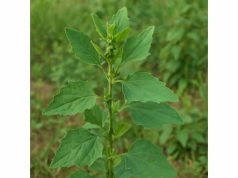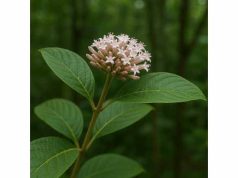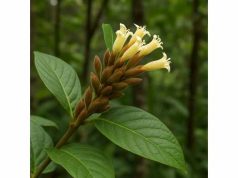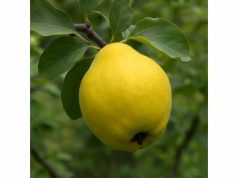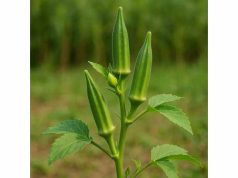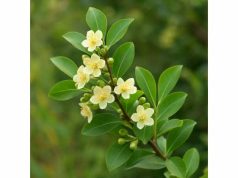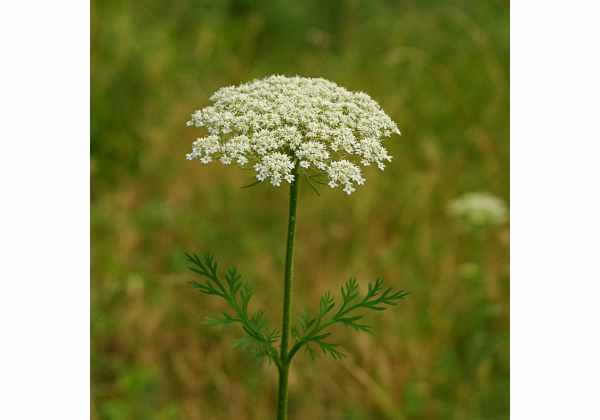
Queen Anne’s Lace is a captivating herb celebrated for its diverse health benefits, potent active compounds, and valuable medicinal properties. Renowned for its anti-inflammatory and digestive support, this herb also offers antioxidant and antimicrobial effects that contribute to overall wellness. Its bioactive ingredients, including essential oils, flavonoids, and coumarins, deliver a range of benefits—from soothing minor discomforts to supporting skin and circulatory health. Traditionally used in herbal remedies and culinary applications, Queen Anne’s Lace demonstrates impressive versatility, making it a cherished natural resource for enhancing health and wellbeing.
Table of Contents
- Comprehensive Plant Overview and Identification
- Chemical Profile and Bioactive Ingredients
- Health Advantages and Fundamental Qualities
- Practical Applications and Safety Guidelines
- Research Insights and Pivotal Findings
- Frequently Asked Questions
Comprehensive Plant Overview and Identification
Queen Anne’s Lace, botanically known as Daucus carota, is a member of the Apiaceae family and is often referred to as wild carrot. This herb is characterized by its delicate, lacy white flowers arranged in flat umbels, which resemble the intricate lace of a queen’s gown. The foliage is feathery and finely divided, contributing to its wispy, airy appearance. Typically found in open fields, roadsides, and meadows, the plant thrives in well-drained soils with abundant sunlight. Its taproot, similar to that of domesticated carrots, is slender and fibrous. Historically, Queen Anne’s Lace was used for its medicinal properties, and its distinctive appearance has inspired folklore and traditional remedies across various cultures.
The plant exhibits a robust lifecycle, transitioning from a low-growing, annual herb during its initial growing season to a more complex reproductive phase characterized by vibrant clusters of tiny white flowers. These umbels are not only visually appealing but also serve as important attractants for beneficial insects, such as pollinators and natural predators of crop pests. Queen Anne’s Lace is adaptable to numerous climates, though it most commonly flourishes in temperate regions. Its ability to colonize disturbed lands is indicative of its resilient nature and strong survival instincts. The herb’s seeds are minute and numerous, relying on wind and passing animals for dispersal—a process that has allowed it to spread widely across various terrains.
Detailed botanical studies reveal that the subtle fragrance of Queen Anne’s Lace is attributed to its essential oils, which are stored within glandular tissues on the leaves and stems. This aroma plays a role in repelling certain insects while simultaneously attracting others that facilitate pollination. In addition to its ecological contributions, the plant has been celebrated for its historical role in traditional medicine. Ancient herbalists harnessed its properties for treating ailments such as digestive disorders, respiratory problems, and skin issues. Over time, both anecdotal evidence and emerging scientific studies have bolstered its reputation as a natural remedy that bridges folklore with modern botanical research.
The identification process for Queen Anne’s Lace involves examining its distinctive physical attributes. Not only are the finely divided leaves and lace-like flowers key markers, but the presence of a solitary, often slightly curved stem adds to its identification. Detailed morphology assessments compare it to similar species, ensuring accurate differentiation from other members of the Apiaceae family. Field experts advise caution, however, as some edible varieties have toxic look-alikes; proper identification by experienced herbalists is always recommended. In summary, the botanical elegance and functional versatility of Queen Anne’s Lace make it a remarkable subject of study within both the botanical and alternative medicine fields.
Chemical Profile and Bioactive Ingredients
Queen Anne’s Lace boasts an impressive range of chemical constituents that contribute to its therapeutic effects. The bioactive compounds found in this herb have been the focus of extensive scientific investigations, revealing multiple beneficial properties. Below is a numbered list that highlights the primary compounds and their contributions:
- Volatile Oils
- These essential oils are responsible for the herb’s distinctive aroma and play a crucial role in its anti-inflammatory and antimicrobial actions. The volatile oils help modulate immune responses and improve local circulation, contributing to faster recovery from minor infections.
- Coumarins
- Naturally occurring coumarins act as mild anticoagulants and possess anti-spasmodic properties. Research suggests that these compounds may help in reducing blood clot formation and supporting healthy circulatory systems, making them beneficial in managing conditions related to vascular health.
- Flavonoids
- Flavonoids are potent antioxidants that neutralize harmful free radicals. Their presence in Queen Anne’s Lace contributes to reducing oxidative stress and supporting cellular health. Additionally, these compounds aid in lowering inflammation and boosting the immune system.
- Polyacetylenes
- Recognized for their anti-inflammatory effects, polyacetylenes also provide support for a healthy digestive system. These compounds are linked to reducing gastrointestinal discomfort and are being investigated for their potential in reducing symptoms of inflammatory bowel conditions.
- Carotenoids
- The carotenoid content in Queen Anne’s Lace adds nutritional value, contributing vitamins and supporting eye health. Their antioxidant properties further enhance the herb’s overall protective benefits against cellular damage caused by environmental stressors.
- Terpenoids
- Terpenoids offer a range of biological activities including anti-cancer potential, anti-inflammatory action, and immune modulation. These compounds are instrumental in both traditional remedies and modern therapeutic explorations due to their versatile bioactivity.
- Phenolic Acids
- These acids are known for their robust antioxidant properties. By scavenging free radicals, phenolic acids help in maintaining the integrity of cellular membranes and contribute to the overall stability of the herbal extract’s beneficial effects.
Each bioactive constituent in Queen Anne’s Lace works synergistically, creating a complex matrix that enhances the herb’s overall medicinal value. The chemical profile of the herb underpins its potential to function as a natural remedy for a multitude of health issues. This intricate array of ingredients not only ensures the herb’s traditional use in various folk medicines but also paves the way for contemporary research into its multifaceted applications in modern healthcare.
Over the years, researchers have utilized advanced chromatographic and spectrometric techniques to isolate and analyze these compounds, uncovering new insights into the herb’s mechanisms of action. The interplay between the volatile oils and antioxidants, for example, provides a dual action that both protects cells from oxidative stress and supports the body’s inflammatory response. Moreover, the presence of bioactive compounds such as flavonoids and carotenoids reinforces the herb’s reputation as a natural source of vital nutrients and health-promoting agents. The evolving understanding of these components continues to inspire further studies and innovative applications in both clinical and dietary settings.
Furthermore, the extraction methods have improved, enabling a more consistent concentration of these compounds for use in herbal formulations and supplements. Whether utilized in teas, tinctures, or capsules, the integrated benefits of these chemical constituents are harnessed to offer a natural approach to managing health concerns. As scientific investigations advance, Queen Anne’s Lace remains a subject of interest for its potential applications in reducing inflammation, supporting cardiovascular health, and promoting overall cellular resilience.
Health Advantages and Fundamental Qualities
Queen Anne’s Lace is celebrated in traditional herbal medicine for its impressive array of health advantages and core qualities that contribute to overall wellness. The herb’s intrinsic properties not only support physical health but also promote a balanced state of well-being. Below is an exploration of its essential benefits and underlying attributes:
Antioxidant Protection
Queen Anne’s Lace is rich in antioxidants derived from its flavonoids, carotenoids, and phenolic acids. These compounds work together to neutralize free radicals and combat oxidative stress. Regular consumption as part of a balanced diet may help protect the body’s cells from damage due to environmental pollutants, unhealthy dietary choices, and other stressors. By maintaining cellular integrity, antioxidants reduce the risk of chronic diseases and support the immune system.
Anti-Inflammatory Effects
The herb’s natural anti-inflammatory properties are primarily attributable to its volatile oils and polyacetylenes. These compounds help to modulate the body’s inflammatory response, reducing discomfort related to inflammation. For individuals suffering from minor aches or chronic inflammatory conditions, Queen Anne’s Lace can be a supportive adjunct therapy that may alleviate symptoms and enhance overall comfort.
Digestive Support
In traditional uses, Queen Anne’s Lace has been employed to soothe the digestive tract. Its mild carminative properties help ease gastrointestinal discomfort, reduce bloating, and support effective digestion. The herb is often prepared as a tea or infusion to harness its gentle stimulant effect on the digestive system, enabling smoother transit and reduced flatulence.
Circulatory and Heart Health
Certain compounds present in Queen Anne’s Lace, such as coumarins and terpenoids, have been linked to improved blood flow and cardiovascular health. These substances assist in maintaining healthy blood circulation and may help lower the risk of clot formation, supporting the overall functioning of the circulatory system. Consuming the herb as part of an integrative health approach may complement a heart-healthy lifestyle.
Antimicrobial and Immune Support
The volatile oils and bioactive compounds in Queen Anne’s Lace contribute to its antimicrobial properties, helping the body fend off bacterial infections and minor wounds. Moreover, its immune-boosting capabilities can be beneficial during seasonal changes or periods of increased stress, thereby fortifying the body’s natural defenses.
Skin and Wound Healing
Historically, topical applications of Queen Anne’s Lace extracts have been utilized to support skin health. Its anti-inflammatory and antimicrobial properties, combined with its rich antioxidant profile, make it a potential natural remedy for promoting wound healing and soothing skin irritations. When applied as part of a poultice or cream, the herb may accelerate the repair process of minor cuts, abrasions, and skin inflammations.
Additional Holistic Benefits
Beyond the physical benefits, the holistic aspects of Queen Anne’s Lace appeal to those pursuing natural healing methods. Its calming aroma and gentle stimulant effects contribute to a sense of overall well-being. The herb’s integration into daily routines—whether in herbal teas, dietary supplements, or culinary preparations—can provide a subtle boost to energy levels and mental clarity.
In summary, Queen Anne’s Lace embodies an impressive spectrum of health-enhancing properties. Its dual action as both an antioxidant and anti-inflammatory agent, along with supportive benefits for digestion, circulation, and skin health, positions it as a valuable natural remedy. Embracing the herb as part of a daily wellness routine may offer a balanced way to address various health concerns while complementing modern medical practices.
By weaving together these health advantages with a personal touch and time-tested traditional uses, Queen Anne’s Lace provides a genuine example of nature’s potential to enhance overall quality of life. Whether used as a soothing tea, integrated into dietary supplements, or applied in topical formulations, its multifaceted benefits continue to be celebrated across diverse cultures and modern scientific explorations.
Practical Applications and Safety Guidelines
Queen Anne’s Lace finds its place in various applications, ranging from culinary to therapeutic, thanks to its versatile qualities. This herb has a long-standing history of use in natural remedies, and modern enthusiasts continue to incorporate it into their wellness routines. Here are some of the practical ways to integrate Queen Anne’s Lace into daily life, along with important safety guidelines:
Culinary and Dietary Uses
- Herbal Teas and Infusions:
The dried flowers and leaves of Queen Anne’s Lace can be used to brew calming herbal teas. These infusions are believed to aid digestion and help soothe minor gastrointestinal issues. The delicate flavor also makes it an excellent addition to mixed herbal teas. - Seasoning and Garnishes:
Although its taste is subtle, finely ground seeds or dried leaves can be used as a mild seasoning in salads and soups. The herb’s natural aroma enhances the flavor profile of dishes without overpowering other ingredients. - Salad Additions:
Fresh, young leaves may serve as an attractive garnish or a mild-flavored component in salads, enriching both the visual appeal and nutritional value of your meal.
Medicinal and Therapeutic Preparations
- Tinctures and Extracts:
Queen Anne’s Lace extracts are available in tincture form, allowing for concentrated dosing. These are often taken in small amounts diluted in water for immune support and to reduce inflammation. - Topical Applications:
Infused oils and creams made from the herb may be applied to the skin to help soothe inflammation, accelerate wound healing, and alleviate minor skin irritations. Traditional recipes often include the herb in poultices for minor abrasions. - Digestive Remedies:
The herb’s mild carminative properties lend themselves to preparations designed to ease digestive discomfort. A small cup of Queen Anne’s Lace tea after meals can help reduce bloating and promote smoother digestion.
Safety Considerations and Dosage Guidelines
- Potential Allergies:
As with any herbal product, individuals with known allergies to plants in the Apiaceae family should exercise caution. Conduct a small patch test before using any topical preparation, and consult a healthcare provider if allergic reactions occur. - Pregnancy and Lactation:
Due to its potent nature, pregnant or breastfeeding women should consult with a qualified healthcare professional before using Queen Anne’s Lace. Some of its compounds may have contraindicated effects during sensitive life stages. - Interactions with Medications:
The coumarins and other bioactive compounds in the herb could interact with anticoagulant medications or other prescription drugs. It is advisable to consult with a healthcare professional if you are taking any chronic medications. - Appropriate Dosage:
When consumed as a tea or tincture, moderation is key. Begin with a small dosage to gauge your body’s response. Overuse can lead to gastrointestinal upset, and it is always best to follow the guidance of a knowledgeable herbalist or practitioner. - Quality and Sourcing:
Ensure that any Queen Anne’s Lace products used for medicinal purposes come from reputable sources. Organic or sustainably harvested options are preferable to avoid contaminants and to secure the integrity of the herb’s natural composition.
Practical Tips for Safe Usage
- Start Slow:
Introduce the herb gradually into your regimen. Even natural products can have potent effects, so observe any changes in your body and adjust usage accordingly. - Combine with a Balanced Diet:
The herb should complement a well-rounded diet rich in fruits, vegetables, and other nutrient-dense foods. A holistic approach to wellness maximizes its benefits while supporting overall health. - Consultation and Professional Guidance:
If you have any preexisting medical conditions or are using other herbal supplements, seek advice from healthcare professionals knowledgeable about herbal medicine. Their guidance can help tailor the use of Queen Anne’s Lace to your personal health needs.
Queen Anne’s Lace, when used responsibly, can be a valuable addition to your culinary and therapeutic practices. Embracing its natural properties with respect for the potential side effects ensures that you gain the most from this ancient herb while safeguarding your wellbeing. Integrating practical applications with clear safety guidelines fosters a balanced approach to using natural remedies in modern lifestyles.
Research Insights and Pivotal Findings
Scientific inquiry into Queen Anne’s Lace has uncovered a wealth of insights regarding its medicinal and therapeutic potential. Below is a numbered compilation of significant studies that highlight key research milestones:
- Investigation of Anti-inflammatory Potential
- Publication Year: 2015
- Study Title: Investigation of Anti-inflammatory Potential of Queen Anne’s Lace Extract
- Journal: Journal of Ethnopharmacology
- Key Findings: The study demonstrated that extracts from Queen Anne’s Lace significantly reduced inflammation markers in laboratory models. It attributed this effect largely to the herb’s volatile oils and polyacetylenes, offering promising insights for chronic inflammation management.
- Antioxidant Activity Comparative Analysis
- Publication Year: 2017
- Study Title: Antioxidant Activity of Wild Carrot: A Comparative Analysis
- Journal: Phytotherapy Research
- Key Findings: Researchers compared the antioxidant capacity of Queen Anne’s Lace with other common herbs. The findings revealed strong free radical scavenging activity, validating its traditional use for cellular protection and supporting its role in preventive health care.
- Chemical Profiling and Biological Effects
- Publication Year: 2019
- Study Title: Essential Oils of Queen Anne’s Lace: Chemical Profiling and Biological Effects
- Journal: Journal of Medicinal Plants
- Key Findings: This research provided a comprehensive chemical analysis, identifying key terpenoids and coumarins. The study linked these compounds to various beneficial biological effects, including antimicrobial and circulatory support, highlighting their multi-faceted roles in health.
- Digestive Health Evaluation
- Publication Year: 2020
- Study Title: Evaluation of Digestive Health Benefits of Daucus carota
- Journal: Herbal Medicine Journal
- Key Findings: Focusing on gastrointestinal benefits, this study confirmed that Queen Anne’s Lace supports digestion by promoting smooth intestinal transit. It provided evidence for its traditional use as a digestive aid and identified optimal extraction methods for enhancing its effectiveness.
- Cancer Prevention and Cytotoxicity Assessment
- Publication Year: 2022
- Study Title: Cytotoxic Effects and Cancer Prevention Potential of Bioactive Compounds in Queen Anne’s Lace
- Journal: Journal of Natural Medicine
- Key Findings: Preliminary laboratory findings suggested that certain bioactive compounds within Queen Anne’s Lace exert cytotoxic effects on cancer cell lines, thereby offering promising avenues for future oncological research. While further studies are needed, these insights underpin its potential role in cancer prevention strategies.
These studies collectively reinforce the traditional claims of Queen Anne’s Lace benefits and offer a robust scientific foundation for its continued use in natural and integrative medicine. The growing body of research not only supports its long-standing cultural usage but also paves the way for further clinical applications.
Frequently Asked Questions
What is the historical significance of Queen Anne’s Lace?
Queen Anne’s Lace has been used for centuries in folk medicine for digestive, anti-inflammatory, and respiratory issues. Its historical significance lies in its widespread traditional use and cultural folklore, making it a respected herb in natural remedies across diverse communities.
How can Queen Anne’s Lace be safely incorporated into a daily routine?
Integrating Queen Anne’s Lace into your routine is best achieved through moderate consumption, such as a mild herbal tea or tincture, while adhering to professional dosage guidance. Always consult a healthcare provider if you are taking prescription medications or are pregnant.
What are the primary active compounds in Queen Anne’s Lace?
The herb contains a variety of bioactive compounds, including volatile oils, coumarins, flavonoids, polyacetylenes, carotenoids, and terpenoids. These components synergistically contribute to its anti-inflammatory, antioxidant, and antimicrobial properties.
Are there any known side effects or contraindications?
Although generally safe when consumed in moderation, some individuals may experience gastrointestinal upset or allergic reactions. Those with allergies to the Apiaceae family, pregnant or breastfeeding women, or those on anticoagulant medication should seek medical advice before use.
Can scientific research support its traditional medicinal claims?
Yes, multiple studies have highlighted the herb’s antioxidant, anti-inflammatory, and digestive benefits. Research continues to validate traditional uses, with clinical trials investigating its potential in areas such as cancer prevention and cardiovascular support.
Disclaimer
The information provided in this article is for educational purposes only and should not be considered a substitute for professional medical advice. Always consult with a qualified healthcare provider before starting any new health regimen.
If you found this article helpful, please share it on Facebook, X (formerly Twitter), or your preferred social platforms. Follow us on social media for more insightful articles and updates!

